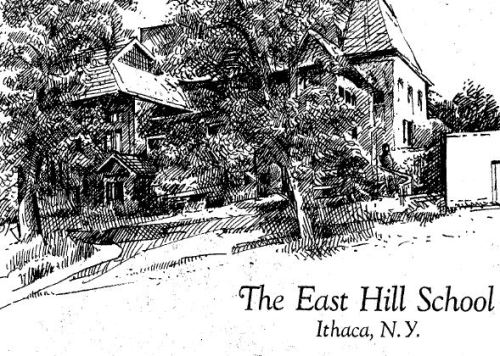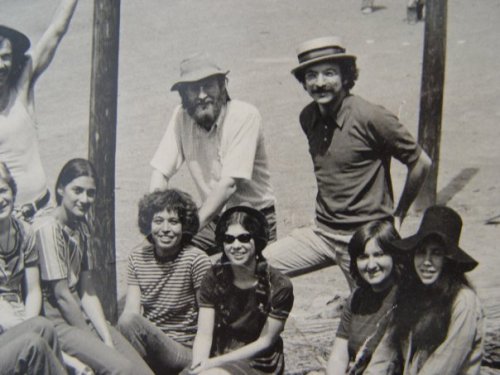Judith Warner has a new review of Teach Your Children Well:?Parenting for Authentic Success,?by Madeline Levine, which prompts me to share another bit of my idyllic alternative school history.
Levine, writes Warner, has
had it with schools that worship at the altar of high achievement but do everything they can to undermine children?s growth and well-being: eliminating recess; assigning mind-deadening amounts of homework; and ranking, measuring and valuing kids by narrowly focused test scores, while cutting out other areas of creative education in which large numbers of students who don?t necessarily test well might find success and thrive. And she?s had it with parents who profess to want nothing more than ?happiness? for their children ? while neglecting the aspects of family life that build enthusiasm and contentment, and overemphasizing values and activities that can actually do harm.
It?s not working. The children of privilege are too often miserable and traumatized. It?s not worth it.
I?ve written before about crazy parenting and its backlash. And Stephanie Coontz had a recent column on it, with this conclusion:
Unfortunately, today?s intensive parent techniques continuously up the competitive ante, exacerbating the growing inequality that created this parental anxiety in the first place. The academic achievement gap between low- and high-income children has?increased over the past 40 years, as has the gap in rates of college entry and completion. The arms race among high-income parents often does turn their children into winners. But society as a whole loses.
So, about that great elementary school I went to.
 In 1975, when I was about 8, the school ? an alternative public school in small, liberal Ithaca, NY ? put out a newsletter that filled in some details in my memory. First, there was the ?normal school day? schedule (paraphrasing):
In 1975, when I was about 8, the school ? an alternative public school in small, liberal Ithaca, NY ? put out a newsletter that filled in some details in my memory. First, there was the ?normal school day? schedule (paraphrasing):
- 7:30: School opens, students can go wherever they want
- 9:00: School starts with homeroom meeting
- 9:20: First activity block (?A child may have a scheduled group with a teacher, or it may be his time to decide what he wants to do. For example, his choices may be to go to the art room or the wood shop or the library, or to find something to do within the homeroom.?)
- 10:20 ? Break
- 10:40 ? Second activity block
- 11:30 ? Homeroom
- 12:00 ? Lunch (?Students may eat wherever they wish, with the exception of the gym and the library. They may eat earlier in the morning if they wish.?)
- 1:00 ? Third activity block
- 2:30 ? Homeroom cleanup and wrap-up activities
- 3:00 ? Optional after school program starts
You saw that right: An hour for lunch.
The curriculum was based on a sequential math and English program that everyone did, but beyond that it was ?the responsibility of the homeroom teacher to help each child receive a well-rounded education.?
The student-teacher ratio at the school was 16:1, according to the newsletter.
In order to hire more teachers, all the teachers at East Hill take a salary cut of approximately 25%. In the process the teachers have to give up the chance to accumulate credit toward tenure.
Yikes. Those were some teachers. Here are a few of them, from an uncredited photo kicking around on Facebook:

That was a great school. I don?t think we had to choose between happiness and success, although it may not have worked for everyone as well as it did for me. (It?s gone now, and the old building is condos.)?The school was disproportionately, but not entirely, filled with the children of Cornell-related academics, people with a lot of privileges to be sure, educational and otherwise.
But about that?competitive parenting, consider the decision the parents of these kids made to send them to East Hill. Would they take a chance like that today?
Source: http://familyinequality.wordpress.com/2012/07/30/the-price-of-parenting-pressure-and-a-step-back/
barbara walters tupelo honey limp bizkit stations of the cross nike foamposite galaxy bill maher seabiscuit
No comments:
Post a Comment
Note: Only a member of this blog may post a comment.